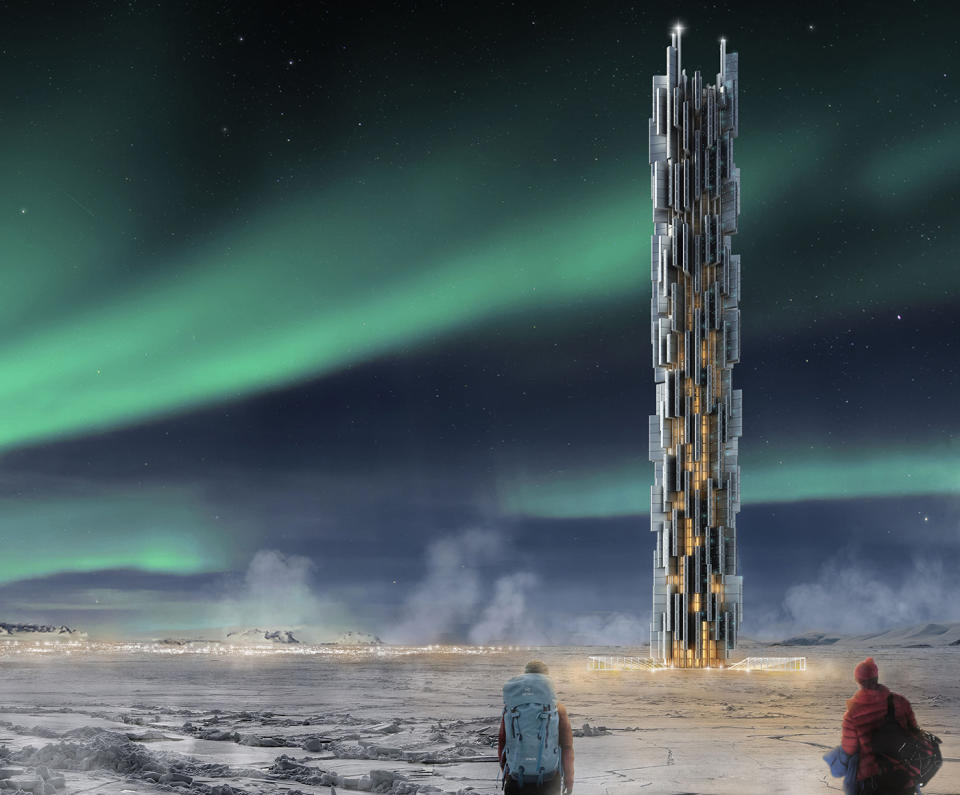Six futuristic data storage technologies
Your information might one day be stored in an abandoned limestone mine.

By Cat DiStasio
Digital technology is taking over the world, and scientists are hard at work finding better ways to store data -- lots of it and for long periods of time. Scientists are exploring new materials for data storage as well as new methods for printing data on their chosen medium. While some companies are storing data on the ocean floor, other imagineers look upward, dreaming of giant storage skyscrapers. With so many different innovations happening in such a short period of time, the race is on to unlock the keys to near-limitless data storage potential.
5D Glass Data Disc

Data storage in five dimensions, embedded in nanostructures within glass discs, could inspire the next wave in record-keeping. A research team at the University of Southampton's Optoelectronics Research Center (ORC) created a prototype the size of a quarter that can hold 360 terabytes of data and withstand extreme heat up to 190°C (374°F). The team believes their invention could be used to store data for up to 13.8 billion years (the age of the universe, FTW) because, unlike CDs and DVDs which hold their data on the surface and are prone to scratches, the 5D glass discs protect that information within their structure, safe from bumps and scrapes.
Underwater data centers

It's no surprise that Microsoft has tons of data to keep secure, and last year the tech giant started experimenting with putting the "cloud" deep under water. Project Natick enclosed data servers in a huge watertight capsule and sunk them beneath the waves in the Pacific Ocean off the coast of Washington. After a two-month test period, the 38,000-pound steel container was brought back to the surface, where its contents -- a data center with the computing power of 300 desktop PCs -- were nice and dry. Learning that the concept works may lead Microsoft to someday install more underwater data centers, but for now it has no firm plans.
Iceland's proposed data skyscraper

Still in the concept phase, this epic data-storing skyscraper was designed to be located in Iceland. The building would act as a giant cylindrical motherboard with a hollow center, allowing for plenty of natural air flow to keep the data servers cool -- which shouldn't be too big of a problem in a chilly place like Iceland. The country's renewable energy infrastructure also means the tower could be powered by 100 percent clean energy. The design concept won third place in the 2016 eVolo Skyscraper competition, although there's no telling if it will ever become a reality.
Hitachi's Quartz Glass Disc

Electronics leader Hitachi produced another version of 5D glass data storage in 2012. Using binary code, researchers packed 40 megabytes of data into a one-square-inch piece of quartz glass (the type beakers are made from). At barely two millimeters thick, each square can hold the same amount of data as a CD and endure temps up to 1,832°F as well as run-ins with chemicals and water. The data can be retrieved with an optical microscope and, just like the glass panes we are all accustomed to, is perfectly transparent no matter how much data is etched into it.
Floating cantilever for low-energy devices

An international research team based in South Korea and Scotland developed a proof of concept for a new type of data storage that relies on a floating cantilever for small gadgets like cell phones and MP3 players. The self-propelled cantilever reacts to electrical currents within the device to convert this electrical information into binary code, and it's both faster and more energy-efficient than existing technologies. Although the tech hasn't made its way into consumer electronics yet, there's still potential for the breakthrough to lead to more efficient data storage down the road.
Abandoned mines as data centers

While many researchers are hard at work developing new data storage devices, others are looking for better locations to put servers. Some say the answer is right beneath our feet, so to speak. Abandoned limestone mines across the country could be retrofitted into the perfect locations for underground data centers. An efficient data storage center will have a consistent cool temperature and humidity level -- two requirements that lead to massive energy use above the ground. Deep inside a mine, however, the conditions are just right. At least one architectural firm, Callison, has already converted a former mine site to an underground data center somewhere in the Northeast United States, but the exact location is top secret. Talk about secure data storage.

